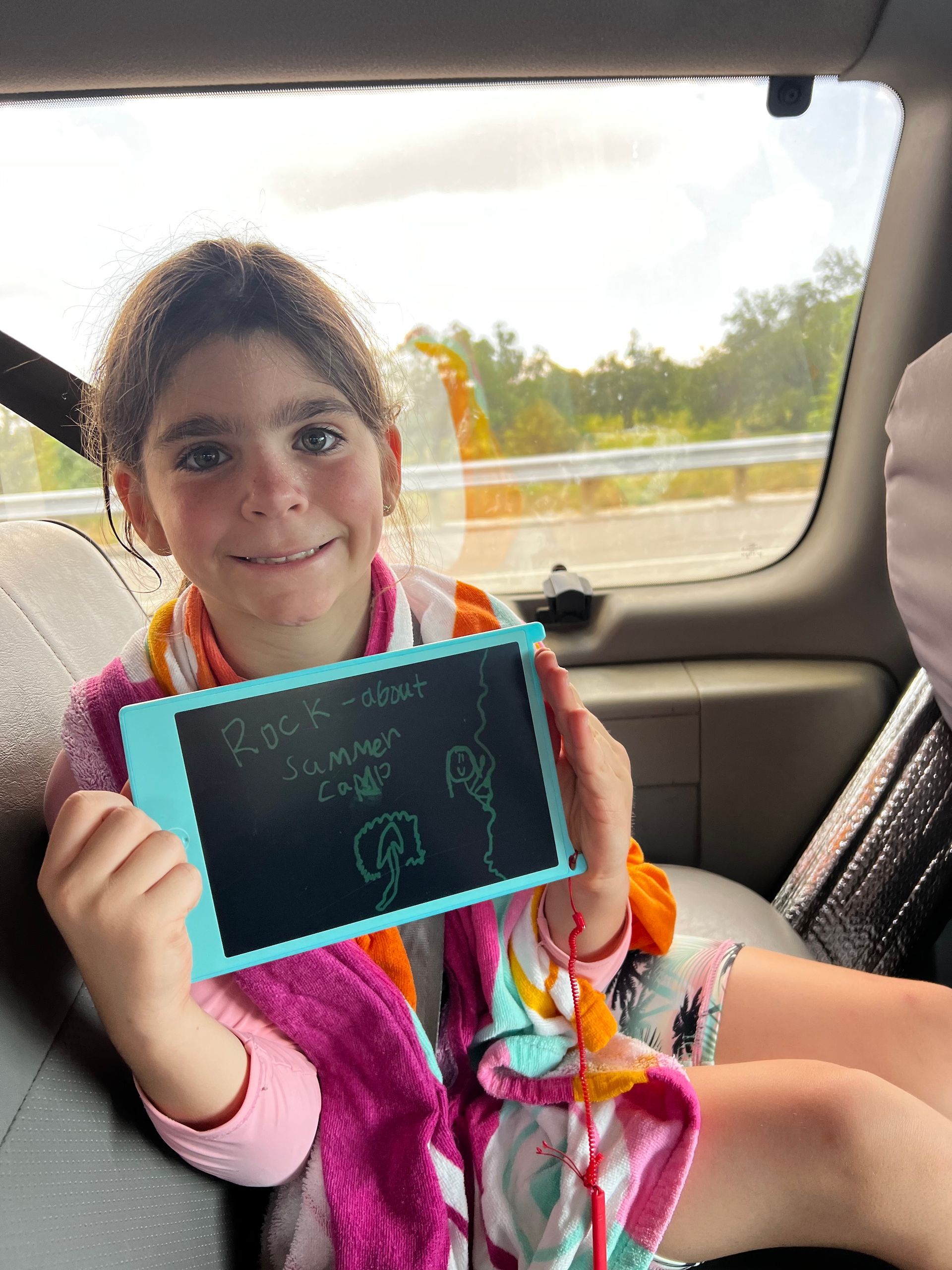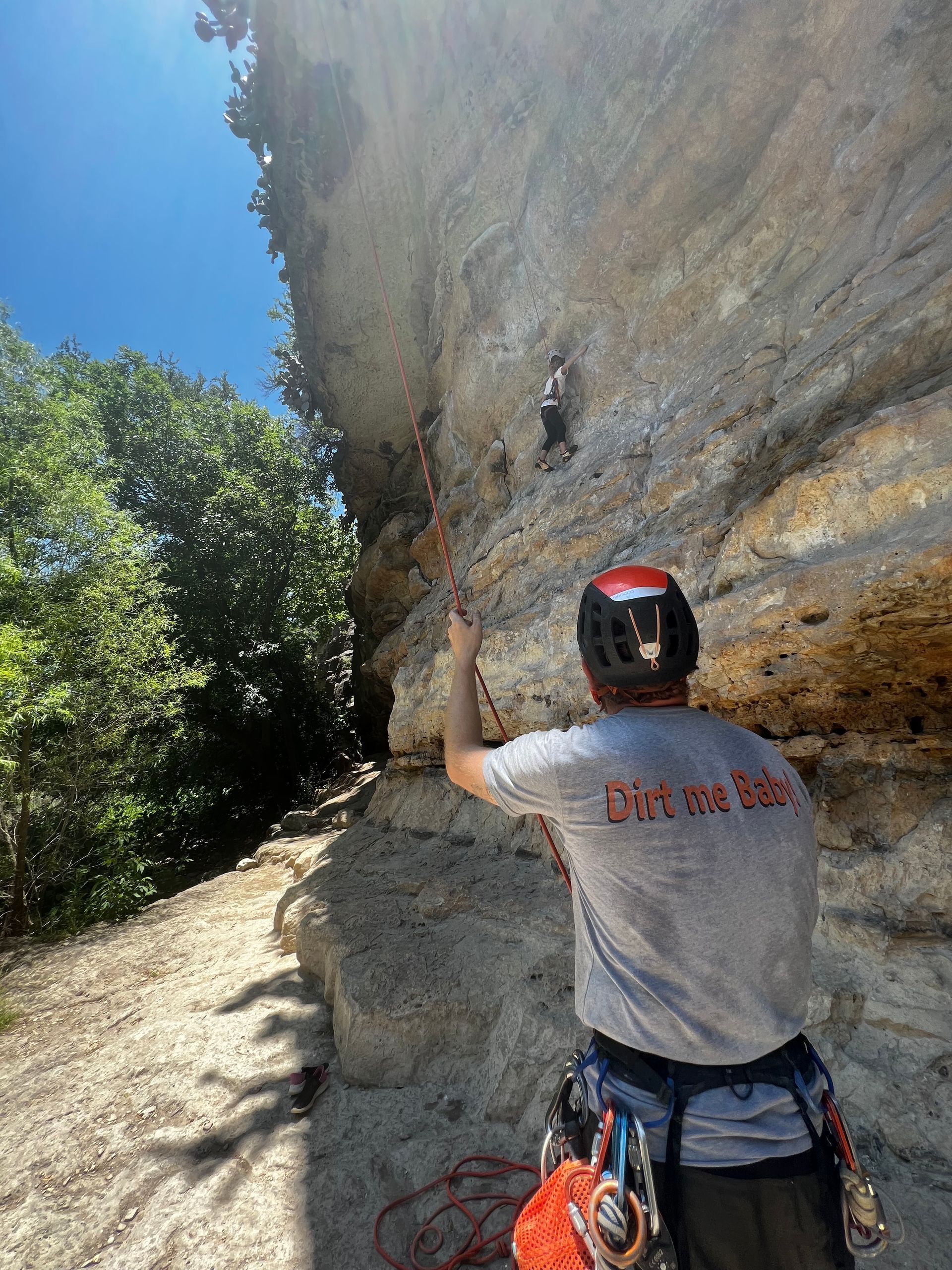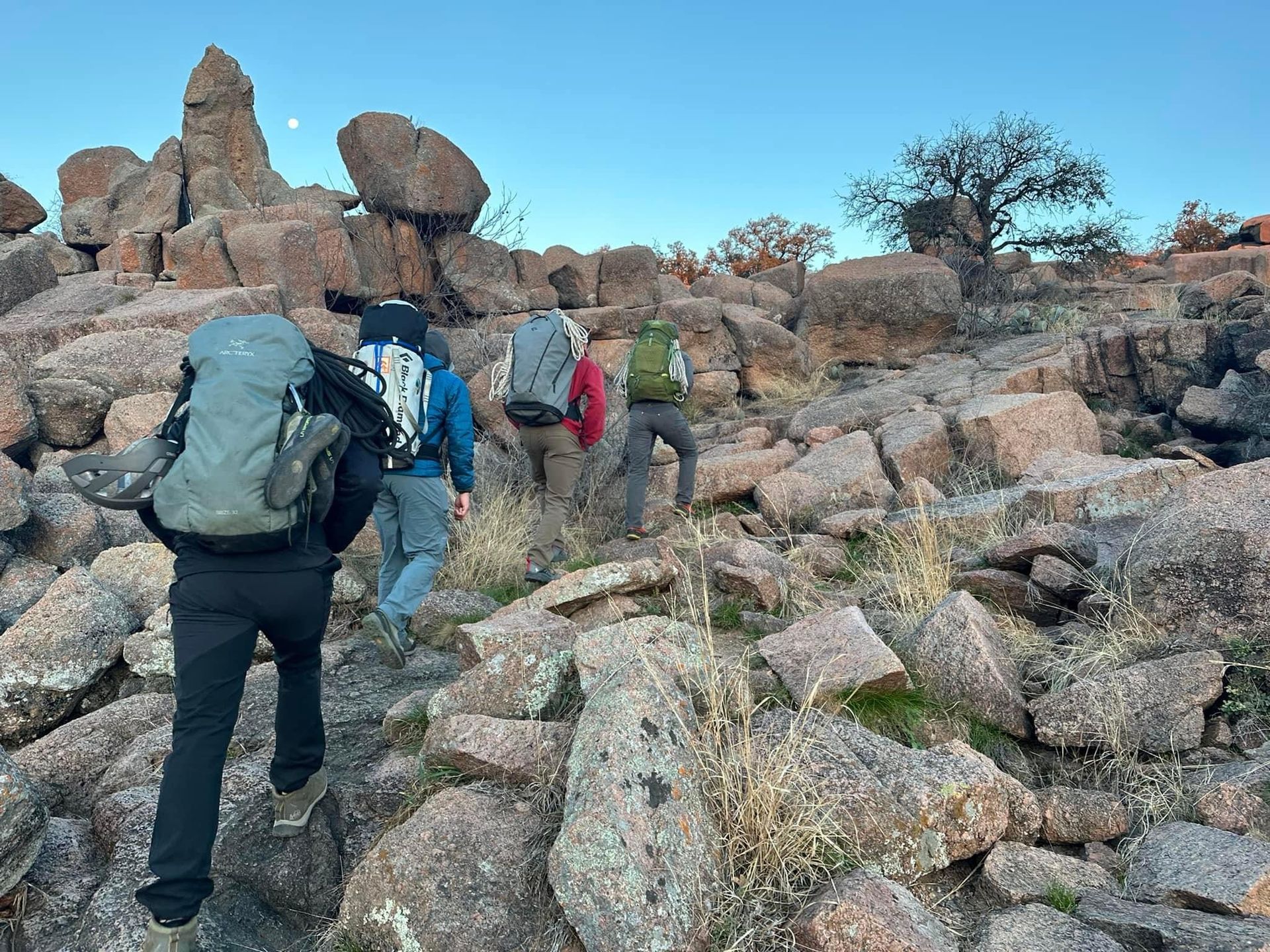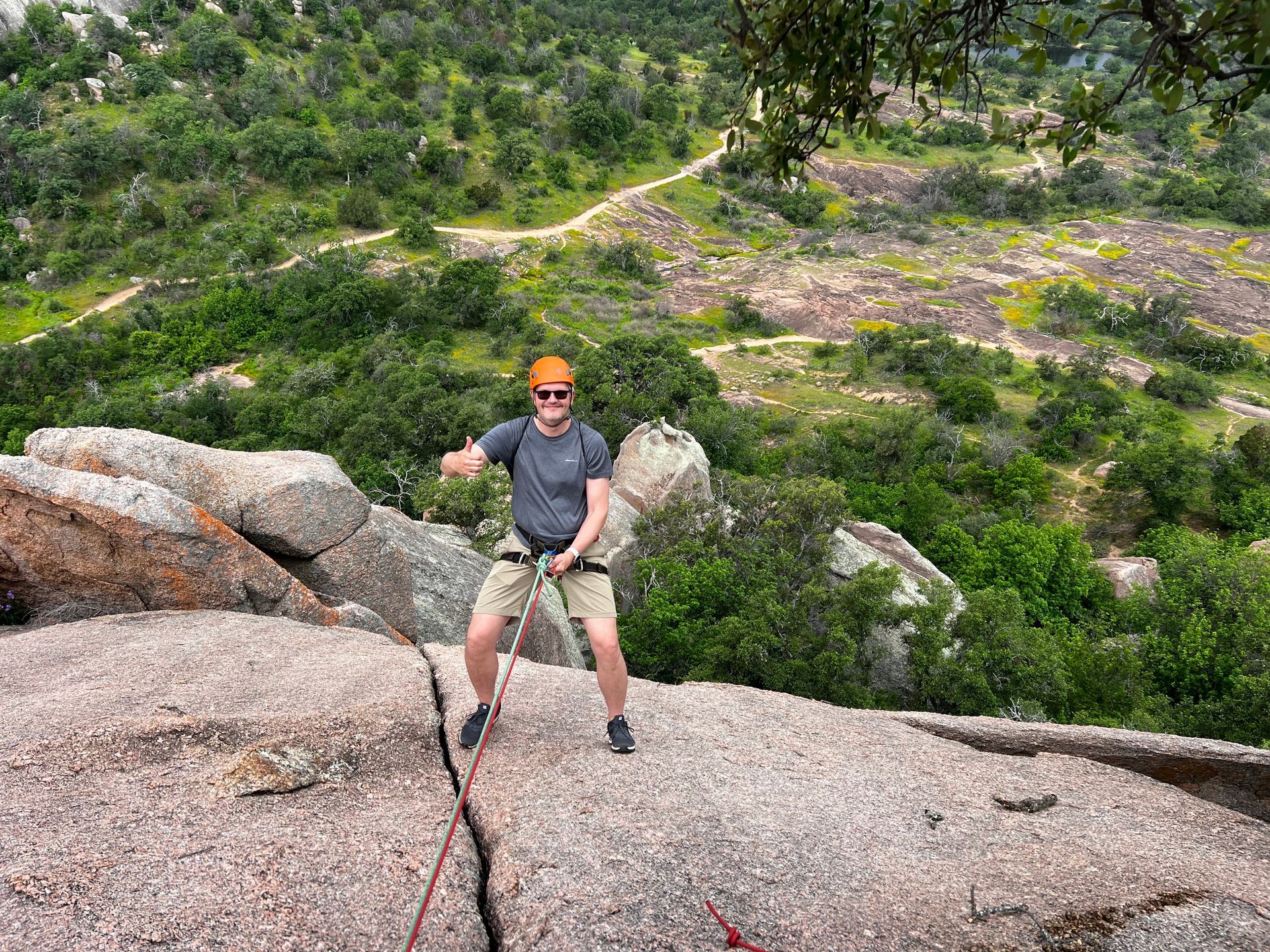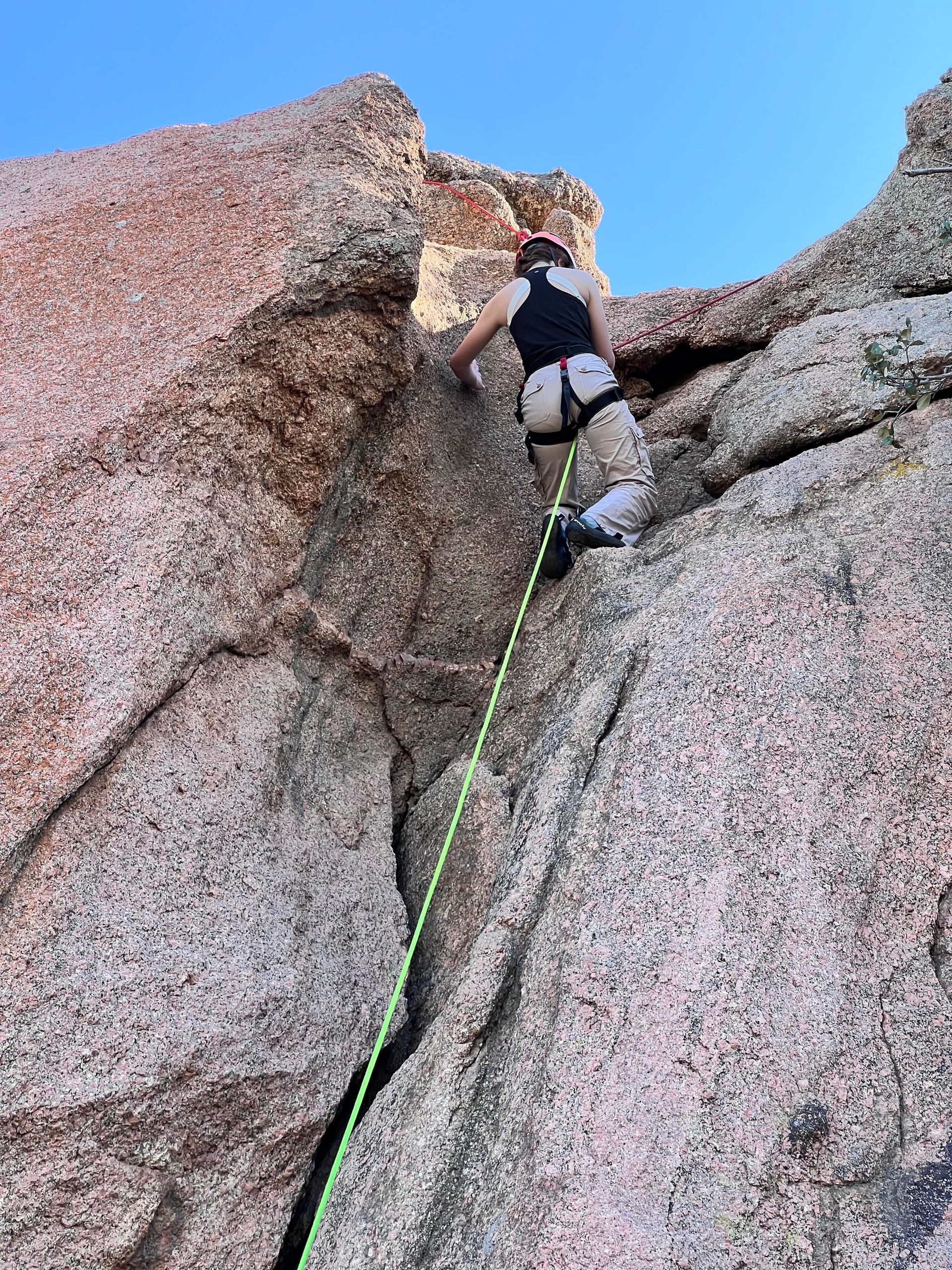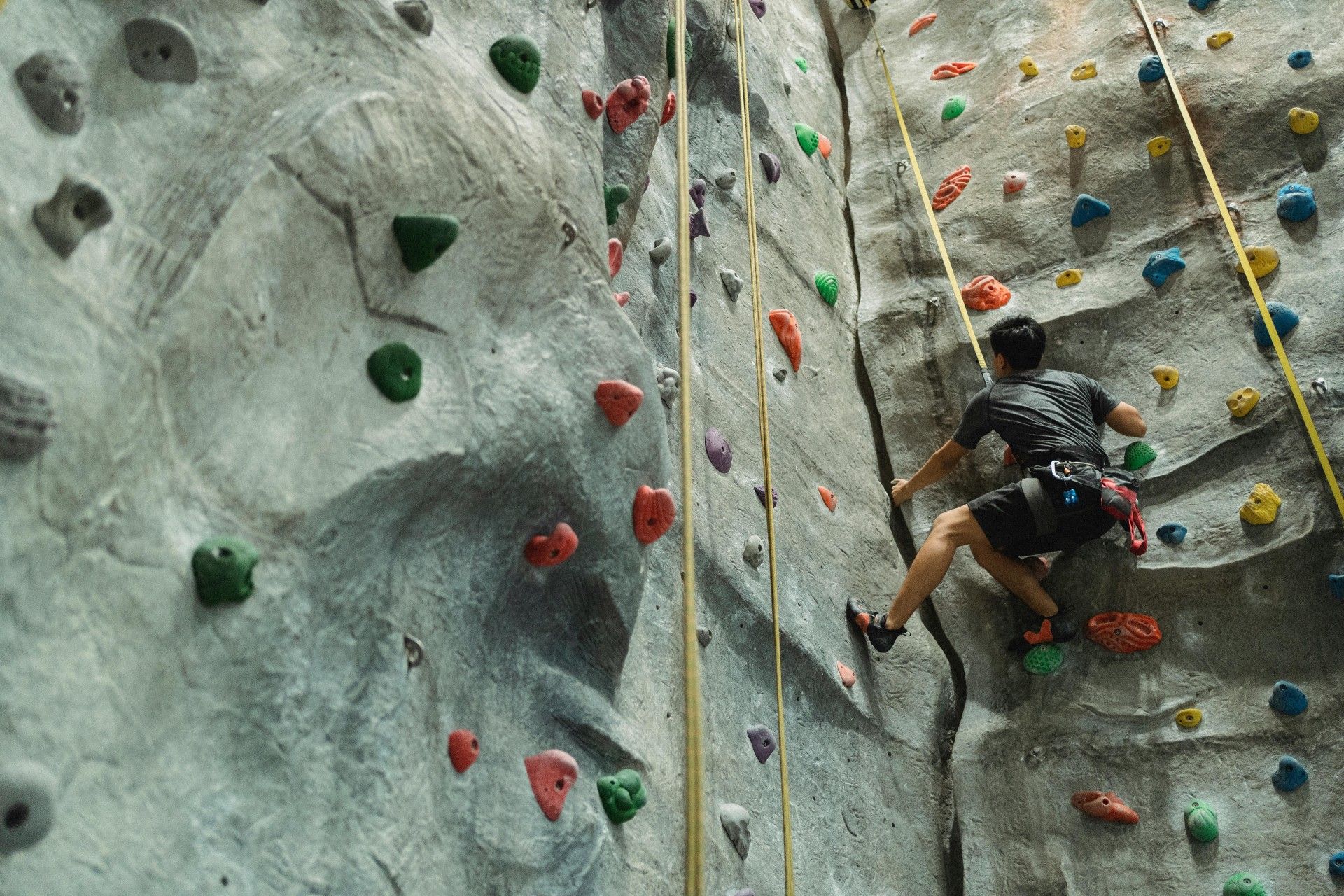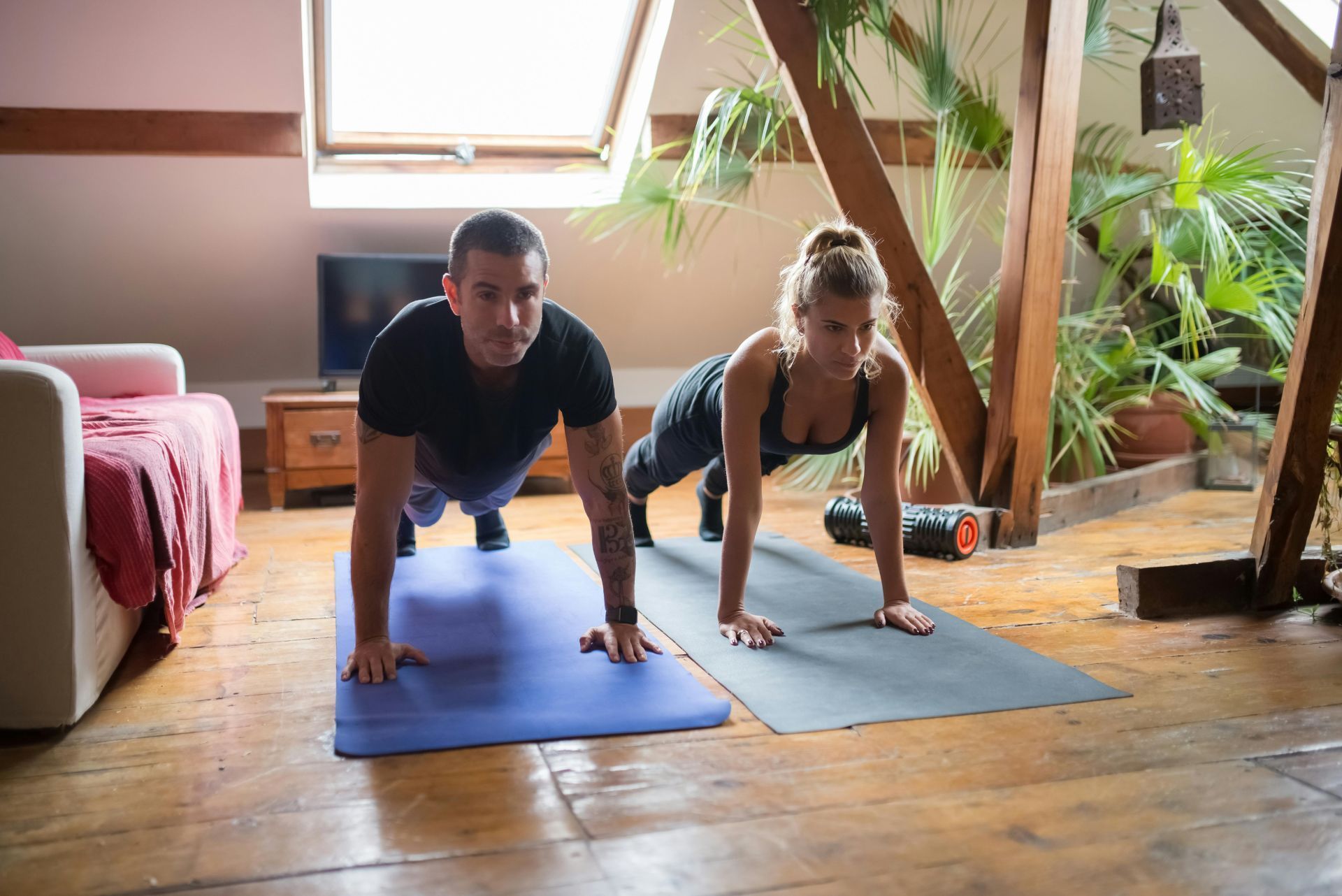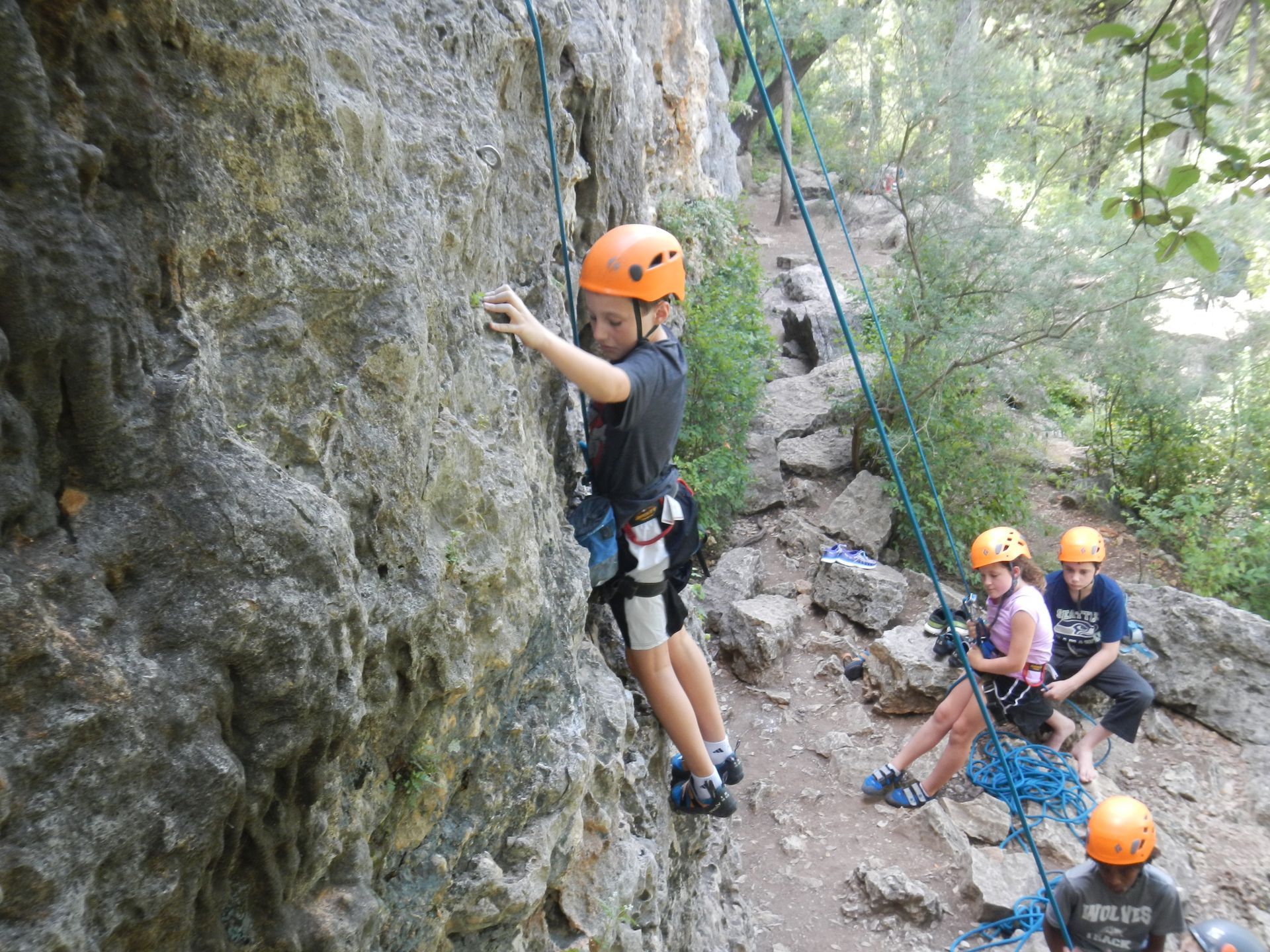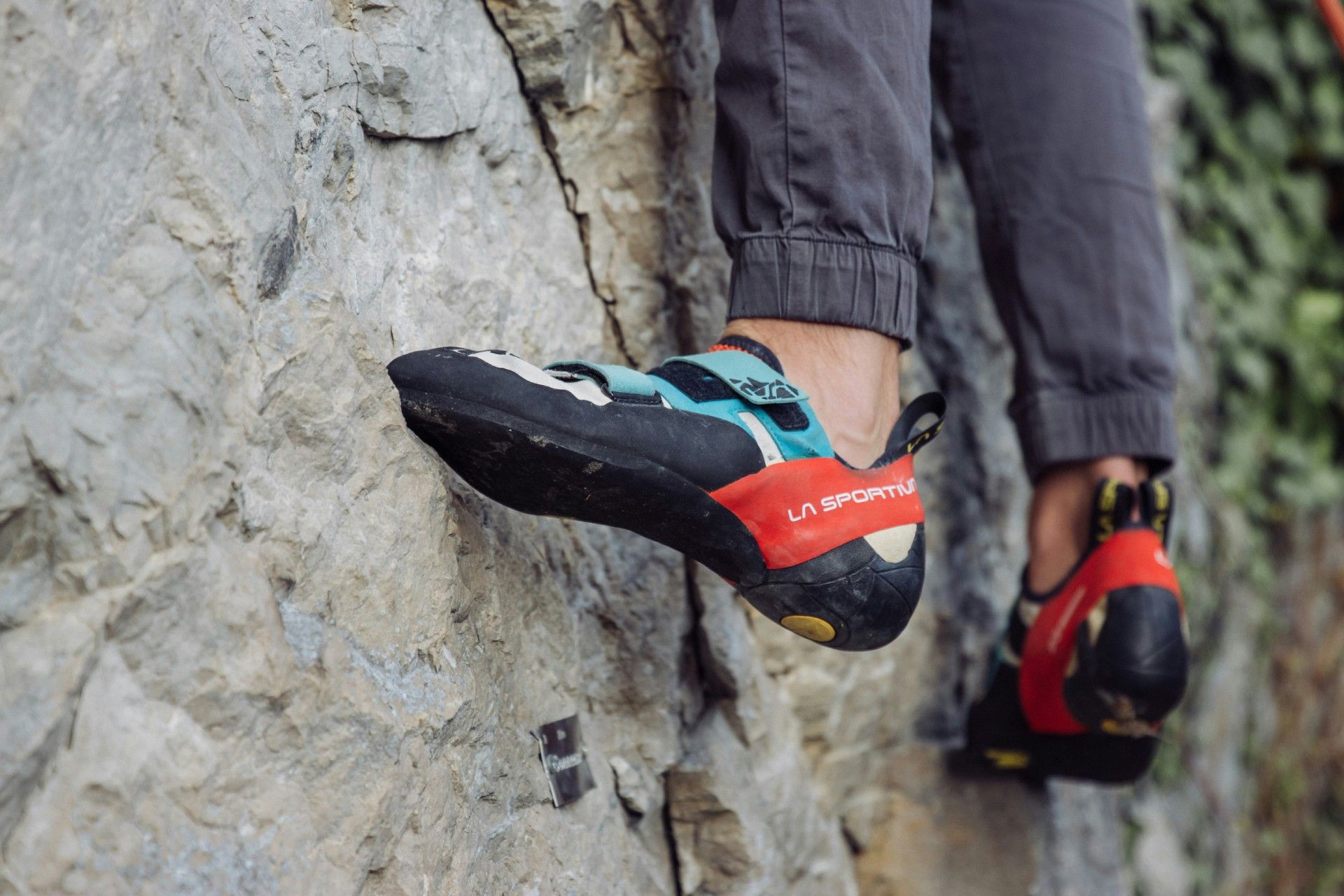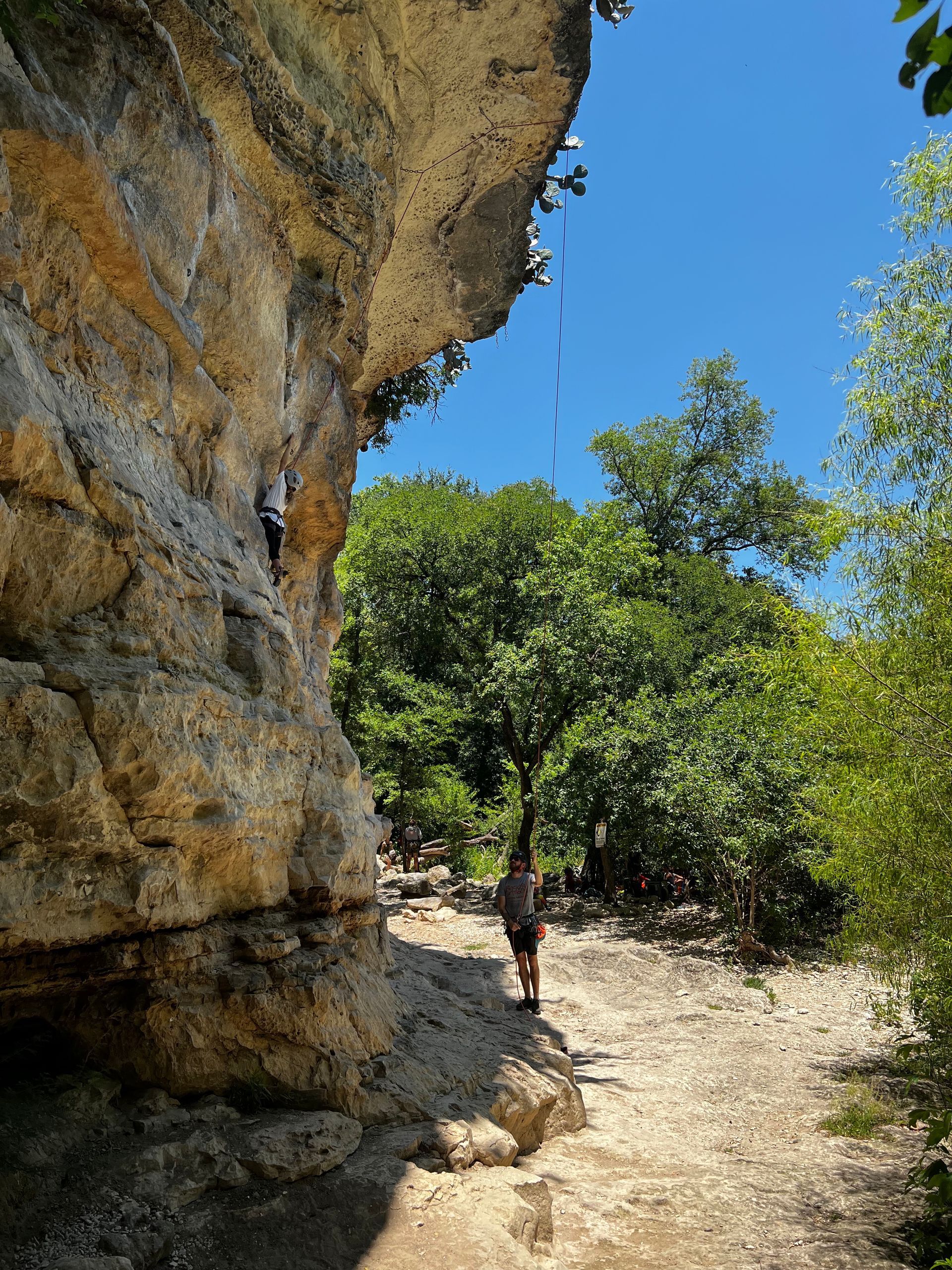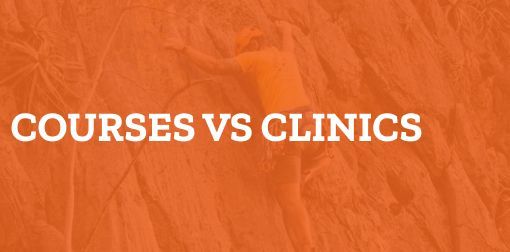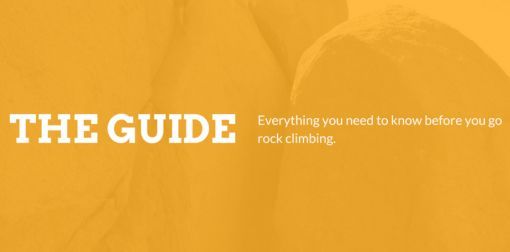Is Rock Climbing Hard for Beginners?
What You Need to Know Before Your First Climb in Texas
Key Takeaways
- Rock climbing isn’t as hard for beginners as it looks—guided top-rope climbs in Texas make it safe, fun, and beginner-friendly.
- Certified AMGA guides and well-maintained routes remove the guesswork, helping first-time climbers feel confident from the start.
- Success in beginner rock climbing comes more from balance, footwork, and technique than sheer strength or fitness level.
- Outdoor climbing at spots like Enchanted Rock or Mineral Wells offers a more natural, supportive environment than crowded gyms.
- Preparing with the right gear, hydration, and mindset ensures your first outdoor climb is safe, rewarding, and memorable.
Rock climbing sounds intense. Steep cliffs, ropes, chalky hands-it’s easy to assume it’s only for the ultra-fit and fearless. But here’s the truth:
Rock climbing is not as hard for beginners as most people think. With the right guidance, location, and gear, it’s one of the most accessible and rewarding outdoor adventures you can try.
At Rock-About Climbing Adventures, we’ve introduced thousands of first-timers to outdoor climbing in Texas. Whether you're looking for a family-friendly day at Enchanted Rock or testing your comfort zone at Mineral Wells, our guided climbs are designed to make your first experience feel safe, fun, and confidence-boosting.
Let’s break it down.
Key Factors That Influence How Hard Climbing Feels
1. Your Guide Makes All the Difference
With an experienced, certified guide, beginner climbing becomes incredibly manageable. At Rock-About, we specialize in making first-timers feel safe and supported.
- Our guides are AMGA-certified and trained to tailor climbs to your comfort level.
- We use well-maintained, beginner-friendly climbing routes.
2. Type of Climb Matters
Bouldering, sport climbing, trad climbing, multi-pitch… the terminology can be overwhelming. For beginners, a guided top-rope climb is the easiest and safest introduction.
- You’re securely harnessed with a rope from above
- Falls are minimal, and you’re always backed up.
3. Fitness Level vs. Technique
Many people overestimate the strength needed to climb.
- Climbing is more about balance, technique, and trust in your feet than brute strength.
- Even if you're not an athlete, with proper guidance, most beginners complete their first climb.
Common Misconceptions About Rock Climbing
"You have to be super fit."
Nope. We’ve seen 8-year-olds and 60-year-olds thrive on the rock. If you can hike a mile, you can probably climb.
"It's too dangerous."
When done with professionals, climbing is one of the safest adventure sports.
- We provide all the safety gear.
- Every climb is double-checked.
- Guides are trained in emergency protocols and risk management.
"I’ll be embarrassed if I can’t finish the climb."
Totally normal worry but completely unfounded. Beginner routes are designed for learning. Most guests are surprised by how much they accomplish
.
"Climbing indoors first is a must."
Indoor gyms are great, but not required. Outdoor climbing with a guide can actually be
more comfortable - the routes are real, the vibe is chill, and you’re surrounded by nature, not spectators.
Expert Tips for First-Time Climbers
Choose a
beginner-friendly guide service
Look for AMGA-certified guides with beginner-specific tours (like Rock-About!).
Dress for movement
Wear flexible clothes that let you lift your legs and reach high. No jeans. Athletic shoes are fine if you don’t have climbing shoes (we provide gear!).
Trust your feet, not your arms
Use your legs to push up, not your arms to pull. This one tip makes climbing easier and less tiring.
Breathe and look around
New climbers often forget to look for footholds. Slow down, breathe, and scan for the next step.
Ask questions
Your guide is there for you. Nervous about heights? Say so. Want to climb faster? Say that too. The best climbs are customized to you.
How to Prepare for Your First Outdoor Climb
1. Pick the Right Location
- Enchanted Rock (Fredericksburg, TX): Stunning granite dome, great for families and first-timers.
- Mineral Wells State Park: Shady cliffs and shorter routes, perfect for kids or cautious climbers.
2. Book Early
Weekends fill fast. Booking 1–2 weeks in advance ensures your spot.
3. Hydrate and Eat Light
Bring water and a snack. Eat something light an hour before climbing (like a banana or protein bar).
4. Pack Smart
- Sunscreen
- Hat or sunglasses
- Closed-toed shoes
- Refillable water bottle
- Comfortable athletic wear
5. Arrive with an Open Mind
You’ll probably surprise yourself. Most guests leave saying: “I can’t believe I did that!”
Additional Resources
Ready to Rock?
So, is rock climbing hard for beginners? Not with the right guide, the right route, and the right mindset. It’s exciting, empowering, and surprisingly accessible for almost anyone.
Ready to try it?
Book your first climb with Rock-About and experience the thrill for yourself.
Got questions? Contact our team or explore our Beginner's Guide to Outdoor Climbing to learn more.
Let’s climb!
Frequently Asked Questions
Here are common questions beginners ask about trying rock climbing for the first time in Texas.
Can I go rock climbing with no experience?
Yes. Guided top-rope climbs are designed for beginners with no prior experience. Certified guides handle the safety systems, explain the basics, and coach you through each step. With proper gear and guidance, most first-time climbers are surprised by how much they achieve on their very first climb.
Do you need to be fit to start rock climbing?
Not at all. Climbing relies more on balance, foot placement, and using your legs than on raw strength. If you can hike a short distance, you can likely enjoy beginner climbing routes. Guides tailor climbs to different ability levels, making it accessible for kids, adults, and seniors alike.
How long does it take to learn to rock climb?
You’ll pick up the basics—like tying in, trusting your gear, and using your feet—on your first day. With a few sessions, most beginners feel comfortable on easy routes. Climbing is a skill you can improve for years, but the initial learning curve is quick when guided outdoors.
How often should I rock climb as a beginner?
Two to three sessions per week is plenty when starting out. This gives your muscles and tendons time to adapt while still building progress. Overdoing it too quickly can lead to fatigue or injury, so consistency and rest are key for safe improvement.
Is outdoor climbing harder than indoor climbing?
Not necessarily. While gyms are convenient, outdoor climbing in Texas often feels more natural and supportive. Beginner routes at Enchanted Rock or Mineral Wells are less crowded, offer solid rock holds, and provide a calmer atmosphere than busy indoor walls.
What type of climbing is best for beginners?
Top-rope climbing is the safest and most beginner-friendly option. You’re harnessed to a rope secured above, which minimizes falls and builds confidence. Unlike bouldering or lead climbing, top-rope lets you focus on learning movement without worrying about advanced safety techniques.
What gear do I need for my first climb?
For guided climbs, most gear—helmet, harness, and ropes—is provided. You’ll just need flexible clothing, closed-toed shoes, sunscreen, and water. Athletic shoes work fine if you don’t own climbing shoes. Guides ensure everything is fitted correctly before you start.
How do I prepare mentally for my first climb?
Expect some nerves, but remember you’ll be secured by professional guides. Breathe, take your time, and focus on trusting your feet rather than pulling with your arms. Looking for footholds and moving steadily helps keep your mind calm and your body balanced.
Is rock climbing safe for beginners?
Yes, when done with certified guides. Every route is checked for safety, gear is double-secured, and guides are trained in risk management. Statistically, guided climbing is one of the safest adventure sports because of the redundancy built into the systems.
What are the best beginner climbing spots in Texas?
Enchanted Rock offers iconic granite climbs perfect for families, while Mineral Wells State Park has shaded cliffs and shorter routes ideal for cautious climbers. Both spots provide beginner-friendly experiences and stunning natural settings, making them great introductions to outdoor climbing.
